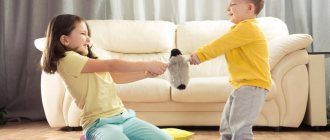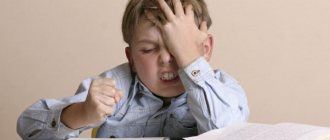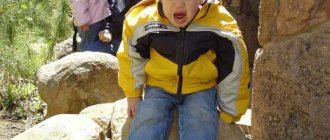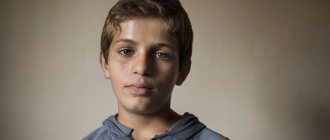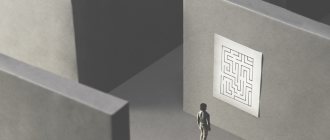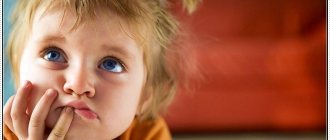Hyperactivity disorder (ADHD) is currently recognized as one of the most common behavioral disorders. As a rule, it is diagnosed in the first years of life, when hyperactivity . Many believe that this disease does not occur after adolescence. In reality, adults face hyperactivity.
Medical research shows that ADHD, even with early treatment, persists in 65% of those diagnosed with the disease. In some cases, psychiatrists and psychologists diagnose hyperactivity in a patient for the first time as an adult. This is often due to an error in the diagnosis earlier. They are often mistakenly attributed to manifestations of depressive disorders or anxiety syndrome. To successfully relieve symptoms, hyperactivity treatment is recommended at a very early age.
What to do if your child has hyperactivity
ADHD is most often diagnosed in childhood. Most often, parents of restless babies or teaching staff of children's educational institutions turn to specialists. The child understands others well. He hears and fulfills the requests of adults, but is too impulsive to accurately carry out the instructions received.
Adults often try to justify all the child’s pranks with this diagnosis. In reality, it is confirmed in no more than 3-5% of babies. Most of them are boys. The course of the disease differs:
- boys show a tendency to aggression and are characterized by hypertrophied disobedience;
- girls suffer from inattention, which can lead to learning problems.
In a third of children, ADHD goes away on its own during adolescence, without the use of specialized medical practices and medications.
Parents hold two polar points of view on the treatment of ADHD. About half consider the possibility of such a pathology to be far-fetched and refuse therapy, believing that the disorder will go away on its own with age. On the contrary, many parents exaggerate the danger of this disease for the development of the child. Hyperactivity requires mandatory monitoring by doctors and appropriate adjustment; in most cases, the pathology is successfully cured. Parents need:
- undergo a comprehensive examination to accurately establish a diagnosis;
- follow the specialist’s recommendations to create the most comfortable conditions for the child, carefully monitor the baby’s condition;
- fulfill all requirements, go through all necessary procedures;
- attend a consultation with a family psychologist.
A child with ADHD is characterized by an increased level of emotionality. He needs to be praised often, increasing self-esteem and self-confidence. In games, it is recommended to exclude competitive aspects that can lead to negative effects on the psyche. It is imperative to set boundaries for the child’s behavior. For example, give simple and executable instructions (take out the trash, wash your cup after yourself and other small tasks). The baby should grow up in the most favorable conditions, but clearly understand the boundaries of behavior so as not to become overly spoiled.
It is advisable to carry out diagnostics in a specialized medical center. Only in such a situation can a neurological disorder be confirmed, excluding simple increased activity or poor upbringing. A preliminary assessment of the condition can be carried out at a local clinic.
general information
ADHD is the result of insufficient production of norepinephrine and dopamine in the brain, which leads to disruption of neural transmission of information in areas responsible for attention, concentration, and decision-making. This is expressed in impulsiveness, inability to maintain attention on anything for a long time, antisocial and even aggressive behavior of the child. The development of children and adolescents suffering from attention deficit hyperactivity disorder differs from generally accepted norms and almost always causes severe problems with learning and socialization in children. According to statistics, this condition occurs 3 times more often in boys than in girls.
Treatment of hyperactivity in children
In medical practice, several options are used to treat hyperactivity in children. First of all, a thorough examination of the small patient is carried out. One of the main goals is to exclude potential pathology.
Further, experts prefer to prescribe non-drug courses. Psychological, pedagogical and psychological methods are used in the work. Participation in the treatment process of the whole family becomes an important condition. For this purpose, specialized family practices are used. This will allow you to establish contact with a child suffering from hyperactivity and develop a treatment program.
In acute situations and in the absence of effect in treatment using psychological classes and trainings, the following medications are selected:
- depressants are prescribed, Amitriptyline, Methylphenidate;
- Focalin, Vyvanse, Methylin contribute to increasing the level of concentration;
- glycine helps improve brain function;
- nootropic drugs Phenibut, Pantogam and others.
All of these medications are used simultaneously in the treatment of a child in exceptional cases. An individual therapy program is developed for each little patient.
Treatment and correction
Treatment of ADHD should include a complex intervention, which should be due to the use of behavior correction techniques, psychotherapy and neuropsychological correction. Treatment also involves influencing not only the patient through various techniques, but also the help of parents, teachers and relatives.
Initially, the doctor conducts a conversation with people around the child and explains to them the features of the disease. The main feature is that such negative and reckless behavior of the child is not intentional. To have a positive influence on the patient, contributing to his recovery, it is necessary that those around him have a positive attitude towards him. After all, first of all, this is where treatment begins.
Parents are given two main tasks that they must perform and monitor:
- education should not include a pitiful attitude towards the child and permissiveness. You should not feel sorry for him or treat him with excessive love, this will only lead to an exacerbation of symptoms.
- do not present increased demands and tasks that he cannot cope with. This will cause his nervousness to increase and his self-esteem to fall.
For children with ADHD, parental mood changes have a much more negative impact than for normal children. Treatment should also come from the teachers with whom children spend most of their time. The teacher must control the situation and relationships of children in the class and instill love and integrity in every possible way. If a patient with ADHD shows aggression, you should not scold him, much less call his parents, but try to explain to him the correct attitude. After all, it is worth remembering that all its manifestations are unintentional.
You should not expect complete relief from attention deficit hyperactivity disorder. But there are many remedies and methods that can reduce severe symptoms. Treatment for ADHD includes medication, diet, psychotherapy, behavior modification, and other methods. Drugs that have an effect on concentration and reduce impulsivity and hyperactivity in ADHD: Methylphenidate, Cortexin, Pantogam, Cerebrolysin, Piracetam, Phenibut, Dexedrine. Their exposure time is up to 10 hours.
Children under 6 years of age should take these medications with extreme caution, because at an early age there is a high risk of developing allergic reactions, insomnia, tachycardia, decreased appetite, and dependence on medications.
It is recommended to use a special diet with limited intake of certain foods. The diet is developed by the doctor individually for each patient.
Massage of the head and neck-collar area, physiotherapy, psychotherapy, physical therapy, and the use of infusions of medicinal herbs (pine bark, mint, ginseng, St. John's wort) will be of great benefit.
The following methods for correcting and improving the condition of their child are recommended for parents of children with ADHD:
- Develop self-control and responsibility in the child.
- It is necessary to instruct the child to perform simple household chores: taking out the trash, going to the store for bread, washing shoes, watering flowers. In a special diary, you can celebrate children's successes during the day and assign appropriate rewards for them.
- Strictly follow the daily routine. It is necessary to teach the child to get up, walk, eat, do business and go to bed at the same time. It is forbidden to stay in front of television and computer screens for a long time, this increases overstimulation.
- Set boundaries for behavior. The child must learn once and for all what can and cannot be done. Children with ADHD must learn to independently cope with the problems and difficulties inherent in their age. Moreover, the requirements for such children should not be lower than for healthy peers. Under no circumstances should you treat a child as if he were sick.
- Develop interest in activities. It is important for a child to feel successful, skillful, and self-confident. If your beloved child has difficulty with school knowledge, then you should not demand high performance from him in all subjects. It is better that the child receives good grades only in the main ones.
- It is necessary to give the child the opportunity to throw out the accumulated energy. Children can benefit from long walks and physical exercises, swimming and active games in the fresh air.
Hyperactivity syndrome in children
It is possible to assume that a child has such a diagnosis at a very early age. Already in the first months the child sleeps poorly. He has an excessively violent reaction to noise and bright light. He reacts violently to hygiene procedures and gets overexcited during the simplest games. There is a slight lag behind the norm in psychomotor skills.
The presence of the disease can be determined at the age of three years. Psychologists mark this age as the first turning point. All kids become capricious and demanding. Children with hyperactivity have a delay in speech development, movements are fussy and chaotic.
The syndrome is accompanied by physiological disorders. The baby often experiences headaches, increased fatigue, and is diagnosed with enuresis and nervous tics.
In the preschool years, children with the syndrome are slower than their peers to learn new material, which is explained by their insufficient ability to concentrate. This situation continues after entering school. The lag in the assimilation of knowledge is caused not by low mental abilities, but by the lack of the ability to concentrate attention and fully remember all the new material.
Emerging problems provoke increased sensitivity and aggressiveness in the child. He becomes anxious and whiny, and phobias develop. As a child with ADHD grows up, self-esteem decreases and complexes arise. Without treatment, they can last a lifetime.
Mom will be a speech therapist
Working with hyperactive children and raising them is hard daily work. But do not forget that ADHD is a behavioral disorder and treatment must be approached comprehensively.
By following these rules, you have a high probability of success in treating ADHD in children. Rapid progress will not come. Sometimes correction takes up to several years.
When organizing activities with hyperactive children, you should adhere to certain recommendations:
- Organization of the external environment and workplace. The workplace of a child with ADHD should be in a quiet place, away from the TV and constantly opening doors.
- Daily regime. The entire life of a hyperactive child must follow a certain daily routine. You can write it in the form of a schedule, hang it in a visible place and learn it with your child, pointing to it every time you need it.
- State the rules of conduct . Parents are not recommended to read long lectures to their hyperactive children. Explain to your child that he will receive rewards for following the established rules. For failure to follow the rules, it would be most appropriate to deprive the child of certain advantages or the opportunity to do something that interests him.
- Brief instructions. Instructions given to the child should be brief, no more than 10 words.
- Alternative form of behavior . Constant yelling and punishment will not give the desired results. When a child behaves incorrectly and irritates everyone, you can try to offer an alternative form of behavior. For example: “You can’t paint on the wallpaper, but if you want to paint on the wall, let’s put a piece of paper on it.”
- Instant nature of incentives . He does not know how to wait long, so rewards should be immediate and repeated every 15-20 minutes. The token system can be practiced both in schools and at home. Tokens are subsequently exchanged for something that interests the child.
- Short lessons. If the child does not hold attention for more than 2 minutes, there is no need to be upset about it. After some time, you can practice for 3 minutes, and then gradually this time will increase to 5-10 minutes. Sensory integration classes will be helpful.
- Regularity of classes . It is better to conduct classes for five minutes 3 times a day and every day than for half an hour, but 2 times a week. Regular exercise gives much more results.
- Active activities and training. Useful activities for a hyperactive child should not be traumatic. Suitable for rhythmoplasty, dancing, exercise therapy
- Shells you can hang from.
It’s good to have equipment at home on which you can climb, hang, and tumble. Even in the cramped apartment, you can hang a crossbar with retractable rings and rope in the doorway. For a hyperactive child, this is a great opportunity to unwind in a way that is non-destructive for the whole family. Such projectiles also develop strength, agility, flexibility, and reduce the tendency to injury. Neurodynamics classes will be very useful - It is important to finish what you start . It’s good if it is responsible and within the child’s strength. In this case, self-control and positive motivation increase.
- It is important to praise the child and support him in every possible way .
If a child doesn’t succeed or at this moment he is very anxious, you need to be able to find something (even minimal) that he has already done well - “What a great fellow you are, you’ve already done almost half of it! Just a little more - just a little left!
, swimming.
and cerebellar stimulation.
Diagnosis of hyperactivity
Children suspected of having ADHD are under the constant supervision of their attending pediatrician. In this case, a neurological diagnosis is not established earlier than 5-7 years. This is due to the developmental characteristics of preschool children. Child psychologists try to diagnose only after the completion of the transitional age crises of 3 and 7 years.
Diagnosis is carried out by a child psychologist together with a neurologist and pediatrician. Consultation with several specialists makes it possible to exclude other diagnoses that lead to increased activity and excitability. Also, during diagnosis, doctors reassure parents that their baby’s increased excitability, restlessness, is only a manifestation of character.
The baby’s condition is monitored from the first weeks of life. If hyperactivity is suspected, the doctor conducts a thorough analysis of the child’s behavior in everyday life.
Diagnostics includes three stages:
- a conversation between a child psychologist and the child’s parents;
- researching;
- obtaining advice from the pediatrician treating the baby.
To confirm the diagnosis in a hospital setting, EEG, REG, M-Echo, MRI are performed. Before conducting research, it is recommended to keep your child busy with an interesting game. You can give a mild sedative.
Prevention and preventive measures
The following recommendations can help children reduce symptoms and prevent the disease from developing:
- Overly active children should not take part in competitions and games that have a pronounced emotional component. Strength sports are also not an option. Hiking and water tourism, swimming, jogging, skiing and skating are suitable for preventing ADHD. Physical activity should be moderate!
- It is necessary to change the attitude towards the child, both at home and at school. It is recommended to simulate successful situations to eliminate self-doubt.
- Children with ADHD can “cripple” the health of their household. Therefore, it is advisable for parents to undergo a course of family or personal psychotherapy. Mother and father should be calm and allow as few quarrels as possible. It is necessary to build a trusting relationship with the child.
- Hyperactive children practically do not react to comments, punishments, prohibitions, but they happily respond to encouragement and praise. Therefore, the attitude towards them should be special.
- Symptoms of the disease in most cases, as the child grows older, will smooth out and appear less pronounced; the child will gradually “outgrow” the difficult period. Therefore, parents need to be patient and help their beloved child get through a difficult stage of life.
Sign up for a consultation. The center’s child psychologist and speech therapist will determine the individual causes of the syndrome, give recommendations for correction, and also draw up a plan for classes in the center and at home. This system of work will make the correctional route the most effective and will successfully harmonize the baby’s development process.
Symptoms of hyperactivity
Doctors recommend conducting studies to confirm the diagnosis at the age of 5-12 years. The child has already gone through the first transitional periods and his character has been formed. But the first signs of this neurological disease appear much earlier. Parents are advised to pay attention to:
- the baby begins to hold his head up, crawl, walk, and sit earlier than his peers;
- sleeps less than normal and has difficulty falling asleep;
- They are highly sensitive to sharp sounds, bright light and other unexpected factors.
Children with ADHD often experience autonomic disturbances. There may be frequent stomach upsets and diarrhea. Allergic reactions often occur.
Among the neurological symptoms, the main one is impaired concentration. The baby has difficulty concentrating on one activity or subject. He avoids cyclical affairs. A child can become attentive only during one-on-one lessons with a teacher. Movements are chaotic. The baby's facial expressions are expressive. He speaks quickly, often slurring his words and jumping from one topic to another. The baby is impulsive and, when choosing a course of action, is guided only by his own desires. Indicative symptoms include frequent mood swings and a tendency to take risks.
All manifestations are associated with the vulnerability of the nervous system of a child with ADHD, which finds it difficult to process a large amount of information coming from the outside world.
Additional symptoms include:
- impaired communication with peers;
- the occurrence of problems in learning with a normal level of intelligence;
- delay in emotional development;
- low self-esteem that develops at an early age.
Hyperactivity also has its positive sides. Children are active, they are mobile and active. They perfectly “read” the mood of the interlocutor and for the sake of people
How to help a child with ADHD?
Attention deficit hyperactivity disorder (ADHD) is a developmental behavioral disorder. As a rule, it is diagnosed in children. A child with ADHD has difficulty concentrating and becomes hyperactive, difficult to control, and impulsive. Unfortunately, many parents and school teachers do not take this disorder seriously and associate the child’s behavior with pampering and bad manners. Children with ADHD are often subject to pressure, both from their parents and from other children. All this is fertile ground for further mental illness and the formation of criminogenic behavior in adulthood. How to determine in time that a child needs professional help? What are the causes of the syndrome? So what if your child is diagnosed with ADHD? Leading researcher at the Ural Federal University Sergei Kiselev tells.
Image title
Sergey Yuryevich Kiselev – Candidate of Psychological Sciences, leading researcher at the Ural Federal University, head of the laboratory of the brain and neurocognitive development.
— I remember how 13 years ago my cousin was diagnosed with attention deficit hyperactivity disorder. At that time, almost no one in Russia knew about this diagnosis. Tell us what is known today?
“In fact, we still don’t fully know what kind of disorder this is.” There is a definition in the International Classification of Diseases, which distinguishes attention deficit disorder separately and hyperactivity disorder separately. However, we often encounter two sets of symptoms. This manifestation is commonly called attention deficit hyperactivity disorder or ADHD.
At the same time, there is still no generally accepted idea about the causes of ADHD, or about the mechanisms that determine the symptoms of the syndrome. We have only a number of different models that try to explain external observable symptoms. I look at this disorder from a neuropsychological perspective within the Lurievian approach. Russian psychologist and neuropathologist Alexander Romanovich Luria created domestic neuropsychology, which is known throughout the world as Luriev neuropsychology. His followers and students developed their own concept of the nature of behavioral and mental disorders in children with ADHD.
It's not just about problems with attention or hyperactivity. These children have a whole set of symptoms associated with disorders of various mental functions, for example, they often have specific memory impairments, increased exhaustion, difficulty engaging in tasks, fluctuations in activity, etc. Modern specialists are faced with the task of explaining the causes and mechanisms of occurrence this set of symptoms.
Why is it important? If we know the mechanism of the disorder, we can more effectively help children deal with it. This will allow us to correctly build developmental correction for children diagnosed with ADHD, which will work with the mechanism of the disorder, and not with external symptoms. Suppressing or removing symptoms often does not mean that we are addressing the mechanism of the disorder, so such correction has a short-term effect. For example, if a person has a cough that is associated with tuberculosis, then cough pills naturally will not cure this disease. In this case, it is necessary to treat tuberculosis, then cough, as one of the symptoms of this disease, will disappear. Also with behavioral disorders. It is necessary to influence the mechanism of the disorder, and not “relieve the symptoms.”
Also, unfortunately, there is not yet a generally accepted understanding of what the variants of ADHD may be. There are likely different types and types of this syndrome. For example, modern research shows that the disorder ASD (autism spectrum disorder) includes many different variants of this disorder, including Asperger's syndrome, Kanner's syndrome, EDA (early childhood autism), etc. Obviously, ADHD also includes different varieties.
It is also important to understand that there are individual characteristics in the course of this disease.
Specialists should not just make a diagnosis of ADHD, thereby putting a unique label on the child. They must clearly understand which variant of ADHD needs to be dealt with in a particular situation. It is necessary to understand the individual characteristics of ADHD in each child.
One of the serious tasks of modern child neuropsychology and neurology is the development of an algorithm for helping children with ADHD, taking into account the type of disorder, age, gender, individual and typological characteristics of the child.
— Describe the key symptoms that may indicate ADHD in the early stages?
— If we talk about the most severe version of ADHD, then there are a number of main sets of symptoms.
The first set of symptoms is related to behavioral characteristics. One of the key symptoms is increased exhaustion. Such children, as a rule, cannot engage in any one activity for a long time. At school, for example, children with ADHD cannot sit through a 40-minute lesson, listen to the teacher, or complete assignments. They quickly become exhausted and switch to other activities. This kind of exhaustion makes it very difficult to learn successfully and, by extension, to effectively adapt to the world.
The second key symptom is related to the inability to quickly engage in certain activities. A simple example: the beginning of a lesson after a break. A typical child quickly enters into a pace of activity that is appropriate for learning activities, begins to listen to the teacher, and complete learning tasks. A child with ADHD cannot change the level of brain activity quickly. During recess, when he ran, jumped, and played with other children, he had increased activity, but it was not suitable for educational activities. The increased level of brain activity cannot be reduced to a level suitable for learning activities. Hence - serious problems with the success of learning, frequent comments from the teacher, etc.
The third symptom manifests itself in the form of peculiar waves of activity. In such children, the effect of either an increase in activity or a sharp decline is observed. Similar wave-like activity also occurs at school during class. Against the background of these fluctuations in activity, a specific effect arises - at the peaks of hyper- and hypoactivity, children with ADHD are not successful in completing educational tasks. At such moments, their brain activity does not correspond to learning activities. But when their brain activity stabilizes for a short period of time and comes into agreement with learning activities, they easily answer the teacher’s questions, can solve a complex problem, etc.
This is why many teachers notice that children with ADHD are often disobedient and chaotic, but at the same time they have normal intelligence. Indeed, the cognitive resources of such children are often quite good. And against the backdrop of an optimal level of brain activity, they realize them to the maximum. And when the level of activity does not correspond to the learning activity, they naturally show poor results.
In fact, each of us has waves of activity. During the day we experience periods of its growth and decline. This characterizes a normal feature of the functioning of our nervous system. It requires a period of rest, rest and activity. But in children with ADHD this feature manifests itself in an exaggerated form. Waves of activity change more frequently and more noticeably.
The fourth symptom is hyperactivity, which manifests itself in the form of increased motor activity, restlessness, a large number of unnecessary movements, speech incontinence, etc. There is such a thing as synkinesis - involuntary unnecessary movements during the performance of some activity or physical activity. For example, a child writes something in a notebook, and at this time his tongue moves, his shoulders move, or his legs move.
Based on these key symptoms in a child’s behavior, experts identify the presence of attention deficit hyperactivity disorder.
Although there are situations when the diagnosis is made in the presence of only one of these symptoms. And that's wrong. For example, increased exhaustion may not be part of ADHD, but may manifest itself as a consequence of dystonia or another disease. Therefore, you need to clearly understand that ADHD is always a collection of symptoms.
In addition to the group of behavioral symptoms, there are a number of secondary manifestations. Children with ADHD often have cognitive problems. For example, they struggle to solve problems when activity fluctuates. An experienced diagnostician will immediately understand that the reason lies not in the child’s cognitive abilities, but in the presence of increased exhaustion while solving the task. Therefore, unfortunately, many unnecessary symptoms are often attributed to such children. In this case, it is necessary to clearly distinguish between primary and secondary symptoms.
Another interesting phenomenon is related to memory. Children with ADHD often experience increased erasure of memory traces under conditions of interference, that is, interfering activity. How does this manifest itself? Imagine that you need to memorize two texts. First, you read and, as it seems to you, remembered the first text. Then you are given a second text. By remembering the second material, you forget the first. This is a natural feature of our memory. But in children with ADHD it manifests itself in an abnormal form. For example, we ask the child to remember first the first 3 words, and then the second 3 words. He repeats the second group of words clearly, but cannot remember the first 3. Such memory problems also interfere with children's educational activities.
In addition, these children have problems with voluntary control. Within the framework of the Luriev model, the so-called “third functional block in the brain” is responsible for voluntary control.
— Tell us more about this model.
— According to the Luriev model, there are three blocks of the brain. The first functional block is responsible for the level of brain activity. The second block is cognitive. It is associated with processing, perceiving and remembering information coming from the outside world. The third block is called the “block of programming, regulation and control over the course of mental activity.”
Children with ADHD often experience secondary developmental delays in the frontal cortex. This leads to problems of derived control and derived attention. For example, such children cannot concentrate on a task and cannot control their behavior. This symptomatology of ADHD is especially pronounced in preschool children. It is clear that, for age reasons, the level of derivative control in these children is very immature. At an older age, closer to 9 years, in children with ADHD, due to improved voluntary control over their behavior, the symptoms of this disorder decrease, that is, a compensatory effect begins to appear. However, ADHD does not disappear, but only goes into a latent (hidden) form.
And finally, another secondary symptom is associated precisely with a violation of involuntary attention. This symptom mostly relates to biology and the so-called orienting reflex to new stimuli. When we hear an unexpected loud sound, we involuntarily pay attention to the source of the sound. This purely biological reaction allows us to effectively respond to potentially dangerous external influences.
Children with ADHD experience a peculiar increased sensitivity to all external influences, for example, to various quiet sounds. A child with ADHD experiences an orienting reflex effect on both strong and weak stimuli. Outwardly, this manifests itself as increased distractibility of the child. It is important to note that the child is not at all to blame for this - it is the indicative reflexes that force him to be distracted.
Imagine that you are walking through a forest at night. Your nervous system will become very sensitive in this situation. You will pay attention to any rustles and sounds. Moreover, under normal conditions, when there is no danger, we react only to strong stimuli. A child with ADHD constantly feels as if he is, figuratively speaking, in such a “dark and scary forest.” This leads to big problems at school, in communicating with teachers and classmates.
So the symptoms of ADHD are quite complex and complex. To understand how a child with ADHD feels, imagine this situation. You are at the railway station, various events are unfolding around you, many sounds are heard, people flash in front of you, you are pushed, etc. And under these conditions you are offered to solve some problem. It is clear that you will be distracted by everything and you will not be able to solve the problem quickly and effectively. Of course, if you were asked to solve the same problem at home in a calm environment, you would cope with it much faster. So, a child with ADHD seems to be constantly in a situation at a train station, where everything distracts him.
In addition, orientation reflexes are accompanied by an increase in the child’s anxiety.
The situation is further aggravated by the fact that others react inappropriately to the behavior of such children. Teachers, parents, peers shout at them. Children with ADHD are under a lot of pressure from the outside world. And this only increases their anxiety.
It is really very difficult for such children. In life, they constantly face adaptation problems, even when they become adults. The syndrome does not disappear with age. It only goes into a latent form, in which external symptoms do not appear clearly, but at the same time it is difficult for such a person to concentrate on some work, he is overcome by a swarm of thoughts, he is constantly distracted by various external and internal events.
— Are the causes of the syndrome in children known?
— Almost all behavioral disorders in children are associated with genetics. However, we cannot say for sure whether a child with a genetic predisposition will actually develop ADHD. The fact is that any phenotypic trait, including behavior, develops under the influence of two factors - genotype and environment. In certain environmental conditions, a genetic predisposition to ADHD may lead to the development of this disorder, but in other conditions it may not.
Risk factors that can lead to the development of attention deficit hyperactivity disorder traditionally include birth trauma, hypoxia during childbirth, and prematurity. However, these factors do not always lead to the development of ADHD. Moreover, if the child does not have a genetic predisposition to this disorder.
ADHD is always associated with a combination of genetic predisposition factors and external adverse influences, especially in the first year of life. At this time, the neurodynamic mechanism in the brain is actively being formed, and external risk factors can lead to the development of this disorder. For example, a child’s emotionally negative experiences associated with the absence of his mother can become such a risk factor.
In addition, children in the first year of life must develop under conditions of adequate sensory load. Violation of the level of sensory information leads to adverse effects on the reticular formation of the brain, which can lead to impaired neurodynamics and the formation of ADHD.
— If you don’t pay enough attention to the disorder, what could this lead to in the future?
— Imagine what kind of world a child with attention deficit hyperactivity disorder lives in. At school he is most often not successful; teachers and parents put pressure on him. Such a child tries to defend himself, often through aggressive reactions. This may ultimately result in criminal behavior. And increased anxiety in the future can provoke the development of serious mental illnesses, for example, pathological depression. That is, such children have a risk of developing unfavorable scenarios in life.
Therefore, it is necessary to treat them correctly in early childhood, build the right atmosphere around such children, respond adequately to the manifestation of certain characteristics, and be more tolerant of them. This will reduce the risk of developing deviant behavior.
— What practices are used to help such children? Are there medications?
— If we talk about attention deficit hyperactivity disorder in its gross form, then comprehensive support is needed. It involves three elements of intervention.
Firstly, medication support is necessary, especially for severe ADHD.
The second element is behavioral correction. There are many different techniques. But one of the most effective is associated with learning so-called deep diaphragmatic breathing. The fact is that the reticular formation, which is responsible for the general level of activity of our brain, is sensitive to a lack of oxygen. We've all experienced extreme exhaustion and ineffective performance while stuck in a stuffy room. If we improve the supply of oxygen to the reticular formation, the brain will work better. A child with ADHD often has uneven and shallow breathing. This impairs the oxygen supply to the brain. The situation can be improved if you teach your child the technique of proper diaphragmatic breathing.
By the way, sports that practice deep breathing, such as swimming, help children with ADHD well. Michael Phelps, a 23-time Olympic swimmer, also suffered from ADHD in action. Phelps coped with this disorder largely thanks to swimming.
Stories like these inspire parents who come to me for advice about ADHD. Such children are helped not only by swimming, but by any other sport where breathing plays an important role - kayaking, canoeing, skiing, running and other rhythmic and aerobic sports. Correct breathing, brought to automaticity, is one of the most important helpers for children with ADHD.
The third direction is aimed at working with families. We are talking about family therapy and creating the right atmosphere in which the child lives. As a rule, children with ADHD demonstrate inappropriate forms of behavior, from the point of view of the parents themselves. Mothers, fathers, grandmothers, brothers and sisters can show aggression and punish the child for inappropriate behavior. And this, as I said above, only worsens the already problem with anxiety in these children. Therefore, it is important that a child with ADHD develop harmonious and tolerant relationships within the family. Under such conditions, it is more likely that he will develop a mechanism of voluntary regulation and control, and he will gradually get rid of the pronounced manifestations of ADHD symptoms.
The most unfavorable parenting strategy that leads to worsening ADHD symptoms is authoritarian parenting. In preschool age, it gives rise to increased infantilism in the child, shifting responsibility to an adult. A mature parenting strategy is for the mother to gradually transfer responsibility to the child in a collaborative environment.
— Tell us what you are working on today?
— Our laboratory of the brain and neurocognitive development works in several directions. One of the important areas of research by our laboratory staff is related to the influence of child-parent interaction on the development of children of primary and preschool age. We are trying to understand which parenting strategies and styles are most beneficial for a child's development, and which may increase the risk of developing various disorders, such as ADHD.
Another important area is devoted to the study of digitalization, the influence of virtual space and computer addiction on the development of children. The international classification of diseases has already introduced a diagnosis called digital addiction or digital addiction. Unfortunately, this is how the modern environment works - it provokes a situation in which a child is immersed early in the virtual space and becomes dependent on it. Some studies show that a child's early interactions with the digital environment negatively affect the development of many basic brain mechanisms. It is clear that digitalization is a reality from which there is now no escape. However, it is very important to correctly and timely introduce a child to the digital environment and adapt him to this new reality.
The third aspect of research is devoted to the formation of a unified diagnostic system for preschool children, which does not yet exist in Russia. Unfortunately, we do not have a generally accepted standard by which we can assess the development of children in preschool age in order to promptly identify atypical manifestations and the risk of deviant behavior. The fact is that preschool age is the period during which most of the basic brain mechanisms are formed. Therefore, any mistakes are fraught with serious consequences in the future. We must learn to quickly identify the causes of deviant behavior and deviant development of children, which will be the basis for the development of effective correction methods. It is necessary to promptly change the child’s environment with the risk of developing deviant behavior, adjust the parameters of his development in order to level out the risks of various disorders. Therefore, we need a unified sensitive diagnostic system that will allow us to identify not only gross developmental disorders, but also minimal deviations in order to help the child in a timely manner.
Preschool age is a very important period in development, since the children's brain is sensitive to both unfavorable external influences and favorable ones. By quickly noticing a deviation, a specialist can change the child’s environment, which will lead to a rapid restoration of developmental mechanisms.
Therefore, at this age it is so important to create the most favorable environment for the child for the development of basic brain mechanisms.
Today, unfortunately, many parents focus on developing school skills in preschool age - reading, writing, counting. It is not right. Thus, parents are ahead of the curve. Figuratively speaking, they are building the roof of the house without finishing the foundation and walls. We must strictly follow a certain sequence of brain development and take into account the individual characteristics of the child, including psychological ones.
The basic mechanisms of the brain must be formed in preschool age through a variety of physical activities: gymnastics, dancing, sports, drawing, music, and so on. And only then, when the foundation has been created, can you easily move on to developing a variety of school skills - writing, reading, counting, etc.
Today, together with Tomsk State University, we are working to create a unified diagnostic system that will easily fit into the preschool education system. It is necessary that it allows effective identification of risks at early stages and makes it possible to quickly adjust the child’s development.
— What advice would you give to parents whose children have been diagnosed with ADHD?
“Unfortunately, sometimes it happens that a child is diagnosed with ADHD, but in fact he does not have this syndrome. I often encounter this phenomenon of overdiagnosis.
Therefore, it is important not to rely on the opinion of only one specialist. It is necessary to re-diagnose with another doctor to make sure whether the child really has attention deficit hyperactivity disorder.
If the syndrome is confirmed by at least two specialists, then the child will need comprehensive support. Unfortunately, parents often rely on medications. Of course, the drugs have an effect, but it is short-lived. If the child stops using them, the symptoms will return, and in some cases even intensify. Therefore, it is important to solve the problem comprehensively. Along with properly structured drug support, it is imperative to conduct behavioral therapy, in particular, using the technique of developing diaphragmatic breathing.
And, of course, parents should not forget that often their own incorrect behavior aggravates the situation. In some cases, parents need to work even more on themselves and their own behavior. Sometimes personal therapy is also indicated, which involves changing positions in relation to the child. Sometimes, such changes have a stronger effect than other influences or interventions.
Video title
Causes of hyperactivity
Among the causes of the violation:
- unfavorable course of the mother's pregnancy, including smoking and drinking alcohol during pregnancy;
- neurological disorders during intrauterine development, for example, fetal hypoxia, asphyxia at the time of birth, premature birth;
- the influence of the family atmosphere on the development of the child in the first months of life, frequent scandals of parents, malnutrition and other unfavorable factors.
The likelihood of hyperexcitability increases as the number of these factors that appear together increases.
Comprehensive programs
New COMPLEX PROGRAMS have been opened at our Center
This is a range of services for the rehabilitation, correction, development and education of children with health problems, speech disorders and musculoskeletal disorders.
Our Center has consultative and diagnostic, rehabilitation and correctional departments.
This way, during the day, the child can undergo the necessary physiotherapeutic, aquatic and other rehabilitation procedures, as well as help children overcome developmental problems and learning difficulties.
Diagnosis of hyperactivity
Such a diagnosis can only be made by a specialist after conducting a series of studies. In recent years, this neurological disorder has been identified as a separate pathology. The diagnosis is officially accepted in international medical practice.
Confirmation of the diagnosis indicates the presence of a chronic neurological disorder. Without the necessary treatment, it can last a lifetime. Without therapy, the disease develops in three directions:
- the child stops believing in himself and withdraws;
- he may experience serious mental disorders, he will begin to live in an imaginary world;
- cope with the pathology on their own, but with great difficulties.
Timely initiation of therapy will help correct the course of the pathology and make the prognosis favorable.
ADHD Treatment
Successful treatment requires a thorough examination to identify the causes. Consultation with a psychiatrist, neurologist, modern research, such as tomography, electroencephalography, mapping, etc., make it possible to establish the factors that triggered ADHD and correctly determine the tactics to combat the disease. When treating ADHD, combinations of therapies such as:
- Drug therapy.
- Psychotherapy.
- Biofeedback therapy.
- Physiotherapy.
- Massage and exercise therapy.
- Psychological and pedagogical work.
- Classes with a speech therapist and defectologist.
- Neuropsychological correction.
Treatment is carried out both at home and in a hospital (in the form of courses in spring and autumn).
Correction of hyperactivity
It is important for parents to monitor their baby’s development from the first days of life. Especially in the case of the presence of negative factors that accompanied the bearing of a child and its birth.
A careful attitude towards the baby in the family will help eliminate ADHD. The home should have a calm and favorable environment. Parents are not recommended to raise their voice to the child or be overly demanding of him.
It is important to form adequate self-esteem in a child from a very early age, praising small actions successfully performed and calmly paying attention to possible mistakes made. They are inevitable, but you should not put too much emphasis on them, causing the child to feel guilty. The support of elders in all endeavors is important for a child. He should have a calm daily routine with the obligatory presence of daily walks with active games, the formation of habits in the field of proper nutrition helps in controlling hyperactivity.
Such careful attitude is required for any child, but the implementation of such corrective rules is mandatory in families with a hyperactive child. It is important for parents to regularly consult a doctor for behavioral diagnosis. In case of acute conditions, the doctor prescribes a set of corrective medications. Only specialists can prescribe any medications. Independent therapy in choosing a course of treatment is prohibited.
Hurry up to sign up for LOGOINTENSIVE
The Speech Center invites children from 2 to 7 years old to a two-week correctional and developmental program in the LOGOINTENSIVE format. START June 21st!
We invite you and your child to take part in this program if:
- Your child does not speak at all or communicates in separate words
- Your child has difficulty establishing contact, self-care
- Is often sick and has impaired muscle tone
- The child has gross violations of sound pronunciation, a low vocabulary, multiple errors in the use of prepositions, endings, etc.
- The child has frequent tantrums and displays aggression towards peers or younger children
- The child has been diagnosed with autism or autism spectrum disorder.
Hyperactivity in adults
For a long time, ADHD was considered a disease that occurs only in young patients and goes away as they grow older towards adolescence. Research in recent years has confirmed that hyperactivity can occur at any age. As a rule, diagnosis in adults is associated with an error in determining the causes of hyperactive behavior in early years. This caused errors in treatment. Sometimes the disease was simply not diagnosed.
Adult patients experience symptoms similar to those of the disease in childhood. Due to adaptation, most adult patients are characterized by increased excitability and hyperactivity. This leads to symptoms:
- difficulties when working according to instructions;
- patients are unable to maintain attention when performing monotonous and tedious actions;
- have weak organizational abilities;
- execute several processes simultaneously without completing the action;
- are forgetful when performing daily duties, may forget objects and goals;
- unable to control the volume of the voice or remain patient, for example, when standing in line;
- interrupting the interlocutors' statements;
- swiftness and variability of behavior;
- increased irritability.
Experts note other factors as well. A positive feature of ADHD in adult patients is high performance. They often successfully build a career, reaching significant career heights. The disadvantages include the occurrence of problems in interpersonal communication, which often interfere with maintaining a high quality of life. Including destructive interpersonal connections with low adaptation. Treatment for hyperactivity can begin at any age. Patients are prescribed corrective medications and undergo individual and collective psychological training.
Diagnosis of the disease
The main diagnostic method for a preschool child to identify ADHD is to observe his behavior in his usual environment: in a kindergarten group, on a walk, when communicating with friends, teachers, and parents.
To make a diagnosis of ADHD, attention, activity, thinking and other processes are assessed, for which a behavioral rating scale is used in children over 6 years of age.
The problem should be dealt with by a child psychologist. Particular emphasis is placed on complaints from parents, teachers and the child’s medical history. When assessing behavior patterns, the doctor needs to know the opinion of the school psychologist and the family situation.
The child must exhibit at least 6 of the following symptoms over the course of six months:
- makes mistakes due to inattention;
- does not listen or hear the interlocutor;
- avoids tasks that require mental effort;
- loses personal belongings;
- distracted by any noise;
- plays restlessly;
- interrupts those talking to him;
- talks too much;
- fidgets and rocks in the chair;
- stands up when it is prohibited;
- throws a tantrum in response to a fair remark;
- wants to be the first in everything;
- commits thoughtless acts;
- can't wait for his turn.
When diagnosing ADHD in adults, a neurologist collects data on possible symptoms of the disease and prescribes studies: psychological and educational testing, MRI, electrocardiography, computed tomography. It is necessary to collect symptoms of the disease.
Hyperactivity in schoolchildren
During school years, ADHD causes problems with mastering the educational program. A low level of ability to maintain attention during lessons and a lack of willingness to concentrate while doing homework causes a significant decline in academic performance. Lack of control on the part of doctors leads to increased anxiety.
Schoolchildren suffering from hyperactivity fall into the category of unsuccessful students, despite the ideal state of intellectual abilities. The child becomes nervous and hot-tempered. His self-esteem decreases.
ADHD symptoms
- Disturbed attention. Difficulty concentrating and maintaining attention. Increased distractibility. They do not capture small details of surrounding events.
- Poor assimilation of the material. During classes, individuals with ADHD are able to process information only for a short time (usually a few minutes). Reading, games, preparing lessons, talking, etc. will be productive only at the very beginning.
- Motor hyperactivity in the form of restlessness, movements of the head, torso, arms and legs.
- Increased talkativeness. Tendency to monologue, does not listen to the end of the interlocutor, interrupts and interferes in the conversations of others. Speech is often accelerated.
The prevalence in children reaches 6%, in adults - 3%. It occurs approximately 2 times more often in men than in women.
Manifestation of hyperactivity
People with this neurological disorder tend to:
- inability to concentrate on performing monotonous routine actions;
- a patient with ADHD is unable to concentrate while maintaining a conversation;
- he can be irritable and moody, prone to mood swings;
- Such people are characterized by impulsiveness and a tendency to take risks.
Diagnostics are necessary to identify pathology. Often these symptoms can accompany a certain eccentricity of a person who does not have neurological pathologies. They also accompany some complex psychiatric disorders.
An examination is recommended for an accurate diagnosis. This will allow us to develop an effective option for complex therapy that provides comprehensive and qualified care. Treatment of hyperactivity is carried out on an outpatient basis. In most cases, psychological therapy is carried out without the use of drugs or the use of drugs in minimal dosages.
Classification of ADHD
Depending on the prevalence of symptoms within the framework of the diagnosis of ADHD, three types of pathology in children are distinguished:
- hyperactive or impulsive type, which is characterized by an involuntary desire to constantly move, while the child is able to concentrate on studies or activities and fully absorb the material studied;
- type with a predominance of attention deficit, which is expressed in the inability to concentrate on a specific action (reading, writing, playing); children with this form of pathology are instantly distracted by the slightest stimuli, have difficulty remembering new information, suffer from inattention, while signs of impulsivity are absent or only slightly expressed;
- combined or mixed type of ADHD, in which the child exhibits signs of attention deficit and hyperactivity equally or with a slight predominance.
The most common form of pathology occurs, the rarest variant is the impulsive type.
Hyperactivity in preschool children
ADHD in children who have not yet reached school age has certain characteristics. Hyperactivity in patients is observed from a very early age, which indicates an innate predisposition to potential disorders. However, doctors do not recommend making a diagnosis confirming a neurological disorder before the age of 5-12 years.
This is due to the peculiarities of the formation of the psyche of a small child. Many children are characterized by increased emotionality, which does not indicate the presence of pathology. Additionally, behavior is affected by the first crises of adolescence, which a person experiences with varying degrees of severity during the period of approximately three and seven years. At this time, every child becomes capricious and begins to attract the attention of adults, becoming either too passive or hyperexcitable.
In preschool age, parents or teachers can only pay attention to a certain predisposition of the child to the future development of pathology. If symptoms persist for months and years, parents should carefully monitor the child’s behavior, pay attention to his communication with peers, and educational progress. Confirmation of the diagnosis is carried out only after a minimum of five years of age.
Hyperactivity syndrome is a pathology that, without proper treatment, can significantly worsen the patient’s quality of life at any age. This neurological diagnosis will be monitored by experienced specialists. The help of doctors and relatives ensures proper adjustment of the behavior of people suffering from ADHD.
Moneybox of knowledge
Relaxation and breathing exercises.
"Balloon"
Goal: relieve tension, calm children.
All players stand or sit in a circle. The presenter gives instructions: “Imagine that now you and I will inflate balloons. Inhale the air, bring an imaginary balloon to your lips and, puffing out your cheeks, slowly inflate it through parted lips. Follow with your eyes how your ball becomes bigger and bigger, how the patterns on it increase and grow. Introduced? I also imagined your huge balls. Blow carefully so that the balloon does not burst. Now show them to each other.”
The exercise can be repeated 3 times.
"The Ship and the Wind"
Goal: to get the group into a working mood, especially if the children are tired.
“Imagine that our sailboat is sailing on the waves, but suddenly it stops. Let's help him and invite the wind to help. Inhale the air, draw in your cheeks strongly... Now exhale noisily through your mouth, and let the released wind propel the boat. Let's try again. I want to hear the wind roar!”
The exercise can be repeated 3 times.
Open exercises
Consultation with a neuropsychologist at the Speech Center.
A neuropsychologist will identify the causes of the child’s difficulties related to the peculiarities of brain function, determine which part of the brain has “failed”, talk about the child’s strengths and weaknesses, help to see his current and potential capabilities and offer ways of effective help in each specific case. After all, banal illiteracy can be the result of unstable attention, a violation of the distinction of sounds by ear, a peculiarity of perception, and much more. Having determined the true cause, the neuropsychologist will give recommendations on how to overcome the difficulties of the learning process, and for preschool children will determine an individual strategy for preparing for school and early prevention of learning difficulties. And if necessary, he will offer an individual or group program of neuropsychological correction (correctional, developmental and formative classes).
Micropolarization of TCMP
TCMP is prescribed to children:
with alalia, ADHD, mental retardation, various speech disorders, problems with learning at school. As well as children with ASD and other behavioral problems.
Operating principle of micropolarization of TCMP.

